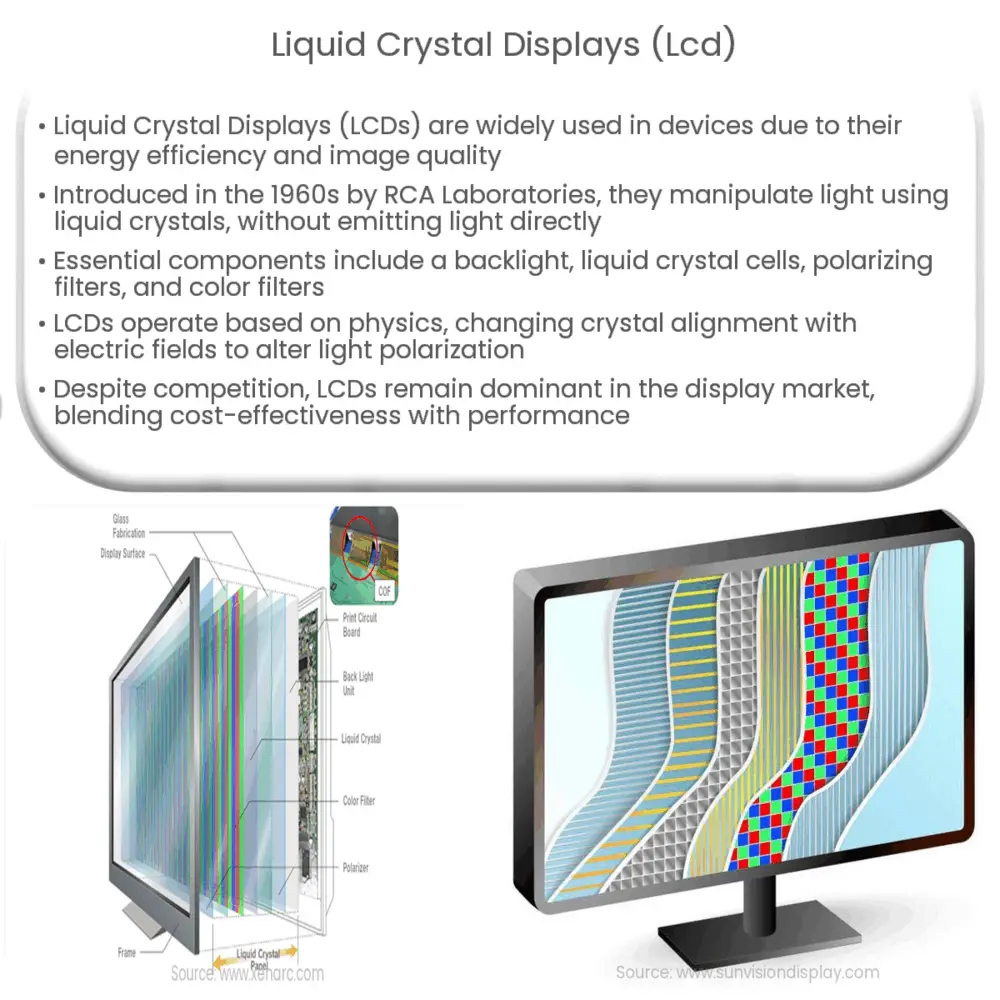Explore the world of Liquid Crystal Displays (LCDs), from their history, workings, types, to their role in the future of display technology.

Introduction to Liquid Crystal Displays (LCDs)
Liquid Crystal Displays (LCDs) are a pervasive form of display technology utilized in a wide range of devices, from smartphones and laptops to televisions and digital watches. LCDs have revolutionized the world of display technology with their energy efficiency, slim profiles, and excellent image quality.
History and Working Principle
The concept of LCDs was first introduced in the late 1960s by a team of researchers at the RCA Laboratories. Over the years, this technology evolved significantly and is now at the forefront of the display industry.
At its core, an LCD functions through the manipulation of light by a substance known as liquid crystal—a state of matter that possesses properties between those of conventional liquids and solid crystals. These liquid crystals do not emit light directly; rather, they use light modulating techniques.
Components of LCDs
- Light Source: LCDs require a backlight as a light source, usually provided by LED lights.
- Liquid Crystal Cells: These are sandwiched between two polarizing filters and are the heart of the display, manipulating light to create images.
- Polarizing Filters: These filters are placed on both sides of the liquid crystal cells and work in harmony with the cells to modulate light.
- Color Filters: These are required in color displays to produce the different colors we perceive on the screen.
The Science Behind LCDs
The functioning of an LCD is deeply rooted in physics. The liquid crystals within the display have the unique property of changing their alignment when an electric field is applied, a phenomenon termed as electro-optic effect. The crystals are normally twisted in structure, and when untwisted by an electric field, they alter the polarization of light passing through them.
Thus, the manipulation of light and the clever use of filters allow LCDs to display a wide range of colors and high-quality images. The complexity of this technology is hidden behind the smooth, sleek display we interact with on our devices, and it’s the LCD that has driven the push for ever-thinner screens.
Types of LCDs
LCD technology has evolved significantly over the years, resulting in various types of LCDs that we encounter today. Here’s a look at some of the most common ones:
- Twisted Nematic (TN): TN displays are the earliest type of LCDs and offer fast response times, making them ideal for fast-paced applications like gaming.
- In-Plane Switching (IPS): IPS displays provide better color reproduction and wider viewing angles than TN displays, making them popular in high-quality displays.
- Vertical Alignment (VA): VA displays offer better contrast and image depth compared to TN and IPS but have slower response times and lesser viewing angles.
Advantages and Disadvantages of LCDs
Like any technology, LCDs have their pros and cons. They are thin and lightweight, consume less power, and offer good image quality. On the downside, they rely on backlighting, which can limit their contrast ratios. Also, the quality of LCDs can vary widely, and they may not offer as wide a viewing angle as some other technologies.
Future of LCDs
Despite the rise of other technologies like OLEDs, LCDs continue to dominate the display market due to their balance between cost and performance. Innovations continue in the field of LCD technology, with trends towards increased energy efficiency, better color reproduction, and even more slim and flexible displays.
Conclusion
In conclusion, Liquid Crystal Displays (LCDs) have had a profound impact on our lives, permeating into various sectors from consumer electronics to aviation. Their cost-effectiveness, energy efficiency, and the ability to deliver high-quality images have made them a staple in the realm of display technology. Despite facing competition from emerging technologies, LCDs continue to evolve, driven by ceaseless innovation and the demand for better visual experiences. Thus, their future looks as bright and vibrant as the screens they power.

